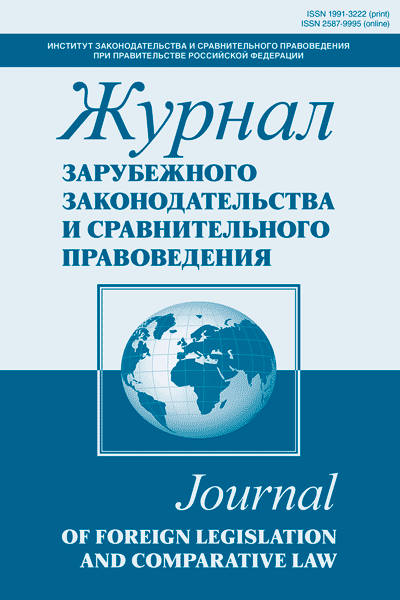The object of the present article is an attempt to restore the names of representatives of the XVI century Belgian School of Realism, who have been “unjustly forgotten” in modern Private International Law doctrine — Nicolas Everhard, Pieter Peck and Johannes a Sande. These scholars are the founders of the Belgian Realism theory of conflicts-of-laws which anticipated the classic Dutch “comity” doctrine and provided the framework for the Anglo-American doctrine of the regulation of international civil relations. The theory of Belgian realism was first outlined by Everhard, Peck and Sande and was formed on the theory of statutes — the only doctrine of Private International Law during 500 years. Belgian Realism is a stand-alone direction of the theory of statutes which triggered the process of a strongly territorial concept of conflict resolution between choice-of-law rules of different states. However, despite their outstanding contribution to the legal practice and doctrine of their time, aforementioned scholars are unknown in modern jurisprudence. The article concludes that Everhard, Peck and Sande developed the choice-of-law rules which are now adopted by modern legislation; moreover, their researches may serve to development of international comity doctrine, which has been adopted by modern Private International Law.
private International Law, doctrine, theory of statutes, XVI century, Nicolas Everhard, Pieter Peck, Johannes a Sande, Belgian Realism theory, Netherlands, Flanders, Belgium, connecting factors.
1. Ancel B. Histoire du droit international privé. P., 2008.
2. Arminjon P. Précis de Droit international privé. P., 1925.
3. D’Argentré B. Commentaire des coutumes de Bretagne. P., ed. 1621.
4. Freyria Ch. Les conflits de coutumes en matiere de successions dans le droit coutumier urbain des Flandres sous l’ancien regime. Revue critique de droit international prive. 1947. No. 249.
5. Gamillscheg F. Der Einfluss Dumoulins auf die Entwicklung des Kollisionsrechts. Tubingen, 1955.
6. Gutzwiller M. Geschichte des Internationalprivatrechts. Basel; Stuttgart, 1977.
7. Laine A. Introduction au droit international privé. T. I. P., 1888.
8. Laurent F. Droit civil international: t. I-II. T. I. Bruxelles; P., 1880.
9. Lorenzen E. G. Huber’s de conflictu legume. Illinois Law Review. 1918-1919. Vol. 13.
10. Meili F. Das Internationale Civil- und Handelsrecht auf Grund der Theorie, Gesetzgebung und Praxis: Bd. I-II. Bd. I. Zurich, 1902.
11. Story J. Commentaries on the Conflict of Laws, Foreign and Domestic. Boston, 1834.
12. Brun M. I. Ocherki istorii konfliktnogo prava. M., 1915. Dostup iz SPS «Garant».
13. Lunts L. A. Kurs mezhdunarodnogo chastnogo prava: v 3 t. M., 2002.
14. Mandel´shtam A. N. Gaagskie konferentsii o kodifikatsii mezhdunarodnogo chastnogo prava: v 2 t. T. 1: Kodifikatsiya mezhdunarodnogo chastnogo prava. SPb., 1900. Dostup iz SPS «Garant».
15. Nol´de B. E. Ocherk mezhdunarodnogo chastnogo prava. List F. Mezhdunarodnoe pravo v sistematicheskom izlozhenii. 3-e izd. Yur´ev, 1912.
16. Shatokhina-Mordvintseva G. A. Istoriya Niderlandov. M., 2007.





